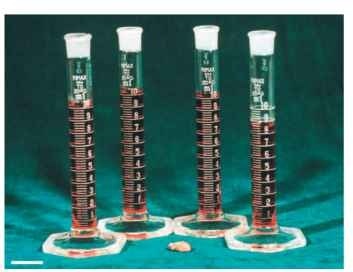Puddling is a behavior in which insects, chiefly adult lepidopter-ans, drink from mud puddles, moist soil, fluids of vertebrate origin (urine, excrement, blood, sweat, and tears), carrion, and even seawater. Although broadly distributed geographically, puddling is particularly spectacular in the tropics where numerous individual butterflies representing multiple species gather to imbibe from damp river banks. The behavior generally is strongly sex biased, with typically only males participating. Puddling is associated with both the insects’ nutritional ecology and their reproductive biology. In certain moths, the behavior is herculean, as individuals imbibe several hundred times their body mass in a single drinking bout!
GENERAL BACKGROUND
Both diurnal and nocturnal, puddling is widely distributed taxo-nomically among the Lepidoptera (>6 butterfly and >12 moth families). Puddling takes place in tropical, temperate, and boreal ecological regions. While observing butterflies puddling in Amazonia in the 1860s, the British naturalist H. W. Bates was first to note that the behavior is strikingly male biased. Subsequently, numerous studies have confirmed that this is generally true, although there are certain species in which females often exhibit the behavior. The exposed, sedentary nature of puddling leaves the drinking insects vulnerable to predation. The dilution effect achieved in large aggregations of puddling butterflies appears to lower individuals’ risk of avian predation. In addition to lepidopter-ans, nocturnal aggregations of leafhoppers (Homoptera: Cicadellidae), also predominately male, drink from moist soil surrounding puddles.
NUTRITIONAL ECOLOGY
Sodium and protein are substances of physiological importance that are scarce within the foliar diets of insect herbivores. By puddling, adult lepidopterans augment their herbivorous larval intake of these limited materials. Since the 1910s, beginning with the British entomologist E. B. Poulton, there was speculation that puddling might allow lepidopterans to obtain sodium. The demonstration in the 1970s that sodium was a necessary stimulus to evoke puddling in the tiger swallowtail (Papilio glaucus) supported this notion. In the 1990s, it was established that puddling indeed leads to sodium uptake: while drinking from mud puddles, the notodontid moth Gluphisia septentrionis showed a gain of sodium, matched evenly (on a molar basis) by a loss of potassium, a plentiful mineral in the larval diet and consequently in the adult body.
Puddling, however, is not simply a means of sodium acquisition, but can further lead to uptake of nitrogenous nutrients. Drinking from moist soil laced with labeled amino acids, tiger swallowtails incorporate these compounds. For tropical butterflies, representatives of certain families (Papilionidae and Pieridae) preferentially visit sodium sources, while members of other families (Lycaenidae, Nymphalidae, and Hesperiidae) typically prefer a protein source, suggesting that nutritional needs may vary among taxa. Species-specific preferences of temperate montane butterflies for puddling substrates of varying sodium (and presumably protein) content further bolster this idea.
REPRODUCTIVE BIOLOGY
Puddling is linked to lepidopteran reproduction and possibly other physiological activities. Through puddling, the male G. sep-tentrionis sequesters nearly 20 |ig of sodium, approximately half of which is conveyed nuptially to the female via the spermatophore. About 5|ig of the transferred sodium is incorporated into the eggs. A nuptial transfer of sodium is also known from the European skipper (Thymelicus lineola), another puddling species. In this butterfly, there is apparently no endowment of eggs with male-derived sodium, but access to the mineral does enhance male mating success. No studies have directly examined whether male Lepidoptera contribute puddle-derived amino acids to their mates. However, such a bestowal is quite plausible, given that males of certain non-puddling lepidopterans transfer amino acids via the spermatophore. The observed relationship between paternal consumption of an amino acid solution and increased egg viability in the tiger swallowtail may reflect such a nuptial transfer.
Beyond reproduction, other potential functions (e.g., neuromus-cular activity) of puddle-derived sodium are receiving attention. A comparative study of the nymphalid genus Charaxes showed that certain species are attracted to sodium and puddle intently, yet produce spermatophores with relatively little sodium. A morpho-metric analysis of riodinid butterflies revealed a positive correlation between species) metabolic costs associated with flight and the tendency of their males to puddle.
EXTREME PUDDLING BEHAVIOR
When puddling, a number of lepidopteran species pump fluid through the digestive tract, emitting droplets from the anus. This behavior is displayed in extreme form by the male G. septentrionis, which forcibly releases anal jets at approximately 3-s intervals while imbibing from puddles. In this insect’s quest for sodium, drinking often persists for hours, resulting in the passage of immense volumes that constitute over 600 times body mass (Fig. 1). Coupled to this behavior is a sexual dimorphism of the ileum (anterior hindgut). The male’s ileum is longer and wider than that of the non-puddling female. Numerous villi are present in the male ileum, but are virtually absent in the female’s. Thus the surface area of the male ileum is

FIGURE 1 Massive fluid passage resulting from the puddling behavior of a male moth (Gluphisia septentrionis). During a period of 3.4 h, the moth (foreground) passed 38.4ml in 4325 squirts while pudding in the field. This volume (dyed for illustration) is in excess of 600 times the moth’s body mass. Scale bar = 2 cm.
nearly 20 times that of the female, making this enteric region a likely site for the observed sodium absorption.
